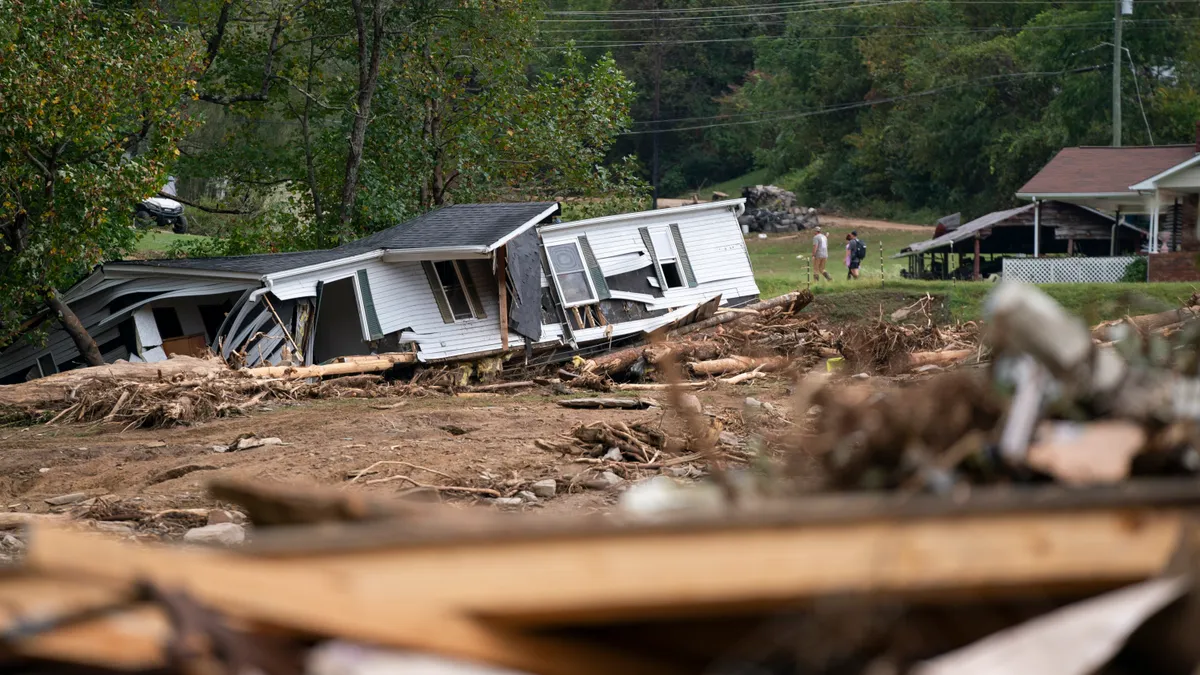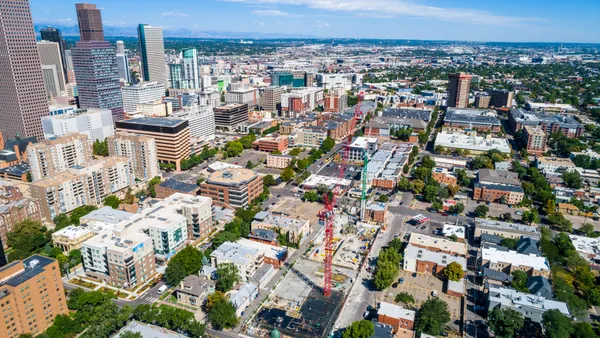'Chief resilience officer' was a novel title a decade ago but is now a fixture across many major city and county governments seeking to address the impacts of climate change and related adaptation challenges. With costly extreme weather events, fires and sea level rise screaming for attention, localities and states continue to hire for or support such positions.
Today, talking about resilience is “definitely more mainstream,” said Stefan Schaffer, who previously served nearly five years as chief resilience officer for the city of Chicago.
The vision for the chief resilience officer position is to work across departments to help cities communicate, prepare and adapt in the face of disasters or extreme weather caused by climate change that can shock its infrastructure and systems. The position at first was predominantly a grant-funded role but more cities over time have started to build full offices of resiliency, said Schaffer, now a city strategist for the Bloomberg American Cities Climate Challenge at the Natural Resources Defense Council.
But this type of resilience work is expensive and cities are seeking billions in federal funding to support these efforts in an equitable way. Budgeting more for those offices allows local leaders to "not only plan and design policies or programs that actually address these longer-term, [almost] existential threats, but actually drive implementation on them in a coordinated manner," Schaffer said.
Many cities had their initial foray with formal resilience positions through the 100 Resilience Cities (100RC) initiative launched in 2013 under The Rockefeller Foundation. The initiative in part helped seed chief resilience officer positions and covered their salaries for two years to take the startup risk off local governments. Although the foundation shuttered that initiative in 2019, it set aside $8 million to continue supporting those officer positions and their work. Some of the key individuals involved in 100RC also went on to establish the nonprofit Resilient Cities Catalyst (RCC).
While other climate-focused officials in cities can have some overlap with the issues resilience officers seek to address, back in 2013 the push to have a separate resilience title was deliberate, according to Michael Berkowitz, a founding principal of RCC who was previously the president of 100 Resilient Cities.
“Because we were trying to start a revolution of how cities think about their risks and opportunities, we were very intentional about the language we used — that it was important that resilience be in their titles, that they be called chief resilience officer,” he said.
Eight years later, Berkowitz says he's less doctrinaire about the specific resilience officer title so long as there are people in place carrying out the position's missions. "I think if you have people in government who are doing that kind of transversal, forward-looking, inclusive work that I think is at the essence of the resilience work that we were preaching, then it's fine if they're called chief resilience officers, or something else,” he said.
One of the most important aspects of creating a separate resilience role as opposed to housing those responsibilities under a variety of existing roles is its intentionally central, cross-cutting nature, said Smita Rawoot, urban resilience lead at World Resources Institute. Given how extreme events could disrupt water, food and power supplies, the idea was to ensure "that cascading risks from one sector do not disrupt multiple other sectors," said Rawoot, who was previously an associate director with 100RC.
And just as, if not more, important than the chief resilience officer role itself is the ability to allocate additional resources to build out a support team. "Certainly for adaptation to be successful, you need more capacity," Rawoot said, describing that establishing a core position is just a starting point. Depending on their needs, cities should build capacity and appropriately staff their resilience offices, she said.
Urban areas that are on board with resilience structure in government can benefit from collaboration, Rawoot suggested, pointing to the example of multiple governments around Miami coordinating on a regional strategy that allowed for collaboration and agreement to uniform risk standards across different kinds of jurisdictional mandates.
Expanding and supporting resilience offices
Some cities are still in the phase of hiring their inaugural chief resilience officer. Jacksonville, Florida, recently appointed a former climate preparedness White House official to the role, created by the city council at the end of last year. Jacksonville was reportedly the last major Florida city without a CRO. But at this point, numerous cities, including Houston and Charleston, South Carolina, have seen multiple people through the role.
At least a dozen states, including South Carolina this year, have also adopted versions of the CRO position to respond to disasters and strategically improve resilience within their state, according to Environmental Defense Fund.
Berkowitz called states' attention to thinking about resilience and appointing their own chief resilience officers encouraging. "I am a huge champion of cities, I think cities are where innovation happens. But in the U.S. context that, states have a really important role," he said. "All the federal money that has this opportunity to be really transformational is going to funnel through the states."
As for decision-making at the city level, they must weigh risk-reduction potential, cost, feasibility, and stakeholder complexity when considering possible steps forward, a newly released report on strategic climate adaptation from the C40 Cities Climate Leadership Group and McKinsey Sustainability outlines.
Reception to resilience planning recommendations has increased significantly the last few years, according to Snigdha Garg, senior manager of adaptation research and integration at C40 Cities and an author of the report. Some cities also realize a single officer "cannot address the magnitude of the problem," Garg said. As a result, more distinct climate-oriented titles have also emerged. Miami-Dade County, for example, made headlines this year when it established a chief heat officer position.
For some communities, the cost of implementing resilience plans can pose a roadblock. Even conducting a risk assessment is expensive.
The Climate Mayors network last week sent a letter to congressional leaders calling for any infrastructure and economic recovery package to in part prioritize flexible funds directly to cities, given that they "face specific challenges unique to their socio-geographical areas." The letter lists a range of local-oriented federal policies and programs it recommends enhancing, from weatherization assistance to smart grid investment grants.
It also calls for at least $4 billion to supplement the Federal Emergency Management Agency's new pre-disaster mitigation program called Building Resilient Infrastructure and Communities, or BRIC, and to prioritize investments in disadvantaged communities. NBC News reported this week that nearly 1,000 local governments applied for funding, and that many poorer applicants may have been shut out.
Resilience work involves thinking about some huge forces and daunting challenges. But the way former Chicago CRO Schaffer sees it, it’s important to be able to tie work back to the lived experiences of residents.
“I don't think you could ever ask a typical average resident, ‘what does resilience mean to you?’ and for it to necessarily translate into their lived experiences," Schaffer said. "I think residents care more deeply about their experience: Are services being delivered efficiently? Is their air breathable? ... Those are the types of questions that are resilience, but at the end of the day are felt in more clear-as-day kind of terms."
Correction: This story has been updated to reflect that the American Cities Climate Challenge is an initiative of Bloomberg Philanthropies.




















